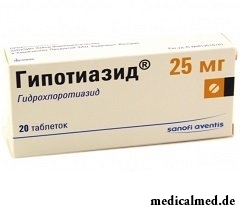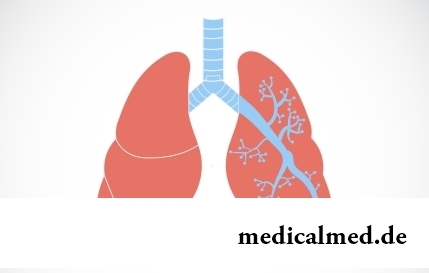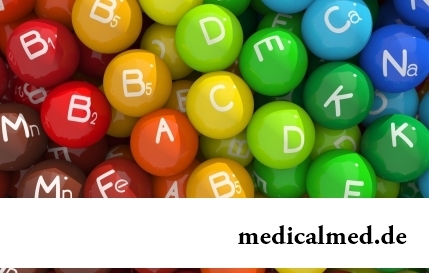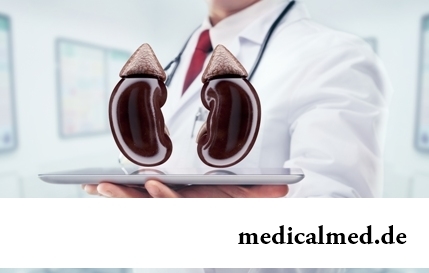





Hypothiazid
Application instruction:
 Hypothiazid – diuretic means.
Hypothiazid – diuretic means.
Form of release and structure
Dosage form: tablets are round, flat, with dividing risky on one party and an engraving of "N" – on another, white or almost white color (on 20 pieces in blisters, in a cardboard pack 1 blister).
The operating component – a hydrochlorothiazide, its contents in 1 tablet – 25 or 100 mg.
Auxiliary components: gelatin, magnesium stearate, starch corn, talc, lactoses monohydrate.
Indications to use
- Edematous syndrome of various origin: portal hypertensia, nephrotic syndrome, chronic renal failure, chronic heart failure, acute glomerulonephritis, syndrome of premenstrual tension;
- Arterial hypertension: monotherapy and treatment in combination with other anti-hypertensive means;
- Prevention of a lithogenesis in urinary tract: decrease in a hypercalcuria at predisposed patients;
- Control of a polyuria: mainly at a nephrogenic not diabetes mellitus.
Contraindications
- Liver failure of heavy degree;
- Renal failure of heavy degree;
- Unmanageable diabetes mellitus;
- Anury;
- Addison's disease;
- I trimester of pregnancy and period of breastfeeding;
- Refractory hyponatremia, hypopotassemia, hypercalcemia;
- Age up to 3 years;
- Hypersensitivity to components of drug and to derivatives of sulfonamides.
With care it is recommended to appoint drug in II and III trimesters of pregnancy, to patients with the coronary heart disease (CHD), at a hypercalcemia, a hyponatremia, a hypopotassemia, cirrhosis, a lactose intolerance, gout, in case of simultaneous use of cardiac glycosides and the patient of advanced age.
Route of administration and dosage
Pill is taken inside after food.
The dose is selected during treatment individually. Estimating a clinical condition of the patient, the doctor appoints minimum effective dose of drug.
Initial dosing for adults:
- Edematous syndrome of various etiology: 25-100 mg of 1 times a day or 1 time in 2 days, in hard cases – 200 mg a day. Considering clinical reactions, the dose decline to 25-50 mg a day once or 1 time in 2 days is possible;
- Syndrome of premenstrual tension: 25 mg of 1 times a day, begin reception with the moment of emergence of the first symptoms prior to the beginning of periods;
- The arterial hypertension (combined also monotherapy): 25-50 mg of 1 times a day, for some patients are enough 12,5 mg. Minimum effective dose should not exceed 100 mg a day. Therapeutic action is shown within 3-4 days, 3-4 weeks can be necessary for optimum stabilization of the arterial pressure (AP). After drug withdrawal the hypotensive effect lasts for 1 week. For the prevention of strong decrease in the ABP at a combination therapy, the dose decline of other anti-hypertensive means can be required;
- Nephrogenic not diabetes mellitus: 50-150 mg a day in stages.
Dosing for children is appointed taking into account the child's weight. The pediatric daily dose usually makes 1-2 mg on 1 kg of weight of the child or 30-60 mg on 1 sq.m of a body surface of 1 times a day, for children from 3 to 12 years – 37,5-100 mg a day.
Side effects
Use of Hypothiazid can cause the following side effects:
- Alimentary system: anorexia, diarrhea or lock, cholecystitis, cholestatic jaundice, pancreatitis, sialadenitis;
- Metabolism: a lethargy, confusion of consciousness, delay of process of thinking, convulsion, excitability, fatigue, muscular spasms against the background of a hypercalcemia, hypomagnesiemia, hypopotassemias, hyponatremias. An irregular heart rhythm, dryness in a mouth, thirst, unusual fatigue or weakness, changes in mentality or mood, spasms and muscle pains, nausea, vomiting against the background of a gipokhloremichesky alkalosis (besides, the gipokhloremichesky alkalosis can become the reason of hepatic encephalopathy or a coma). A glycosuria, a hyperuricemia with development of an attack of gout. A hyperglycemia which can provoke development of earlier latent diabetes mellitus. Treatment in high doses can lead to increase in level of lipids in blood serum;
- Cardiovascular system: arrhythmia, vasculitis, orthostatic hypotension;
- System of a hemopoiesis: very seldom – thrombocytopenia, a leukopenia, hemolitic anemia, an agranulocytosis, aplastic anemia;
- Nervous system: temporary vagueness of sight, headache, dizziness, paresthesias;
- Urinary system: intersticial nephrite, functional disturbances of kidneys;
- Allergic reactions: a small tortoiseshell, a photosensitization, a necrotic vasculitis, a purpura, Stephens-Johnson's syndrome, anaphylactic reactions up to shock. A respiratory distress syndrome, including a pneumonitis and not cardiogenic hypostasis of a lung;
- Others: decrease in a potentiality.
Special instructions
During long course treatment it is necessary to control clinical signs of disturbance of water and electrolytic balance, especially at patients with abnormal liver functions, diseases of cardiovascular system.
Use of drug promotes the strengthened removal of ions of magnesium and potassium therefore in parallel in the course of treatment it is necessary to hold events for elimination of their deficit.
At patients with the lowered function of kidneys it is necessary to control systematically clearance of creatinine, in case of approach of an oliguria it is necessary to resolve an issue of drug withdrawal.
At patients with an abnormal liver function of a tiazida it is necessary to apply with care as minor changes of water and electrolytic balance and level of ammonium in blood serum can cause a hepatic coma.
Use of drug for patients with a severe form of a coronary and cerebral sclerosis demands extra care.
Prolonged treatment at a latent and manifest diabetes mellitus needs to be accompanied with systematic control of metabolism of carbohydrates and dose adjustment of hypoglycemic drugs.
Constant assessment of a state is demanded by patients with the broken metabolism of uric acid.
Long therapy, in rare instances, can lead to pathological change of epithelial bodies.
In an initial stage of therapy it is forbidden to manage vehicles and to perform the works requiring special attention, duration of the period of prohibition is defined individually.
Medicinal interaction
Simultaneous use of a hydrochlorothiazide with lithium salts as against the background of decrease in renal clearance of lithium its toxicity increases is not recommended.
Simultaneous use of diuretic: with cardiac glycosides can increase toxicity of a foxglove; Amiodaronum – increases risk of developing of the arrhythmias connected with a hypopotassemia.
Drug reduces efficiency of peroral hypoglycemic means that increases risk of development of a hyperglycemia.
Administration of drug with corticosteroids, a calcitonin promotes increase in extent of removal of potassium.
At a combination to non-steroidal anti-inflammatory drugs, Colestyraminum hypotensive and diuretic action of Hypothiazid decreases.
Drug can strengthen action of not depolarizing muscle relaxants.
Simultaneous use with amantadiny can cause decrease in its clearance and increase risk of toxicity.
Simultaneous use with barbiturates, ethanol, opioid analgetics promotes increase in orthostatic hypotensive effect.
Drug should be cancelled before carrying out analyses on function of epithelial bodies.
Terms and storage conditions
To store in the place protected from light at a temperature up to 25 °C. To protect from children.
Period of validity – 5 years.
Name of drug
Price
Drugstore
Hypothiazid тбл 25 mg No. 20, Chinoin Pharmac. and Chemical Works
92 rub.
 Network of the Moscow drugstores of IFC
Network of the Moscow drugstores of IFCHypothiazid тбл 100 mg No. 20, Chinoin Pharmac. and Chemical Works
119 rub.
 Network of the Moscow drugstores of IFC
Network of the Moscow drugstores of IFCWhen lovers kiss, each of them loses 6,4 calories a minute, but at the same time they exchange nearly 300 species of various bacteria.

About influence of fasting days on an organism it is told much – both about advantages, and about shortcomings. It is considered that fasting day...
Section: Articles about health
(Xerostomia) many people consider feeling of a xerostomia small and easily removable inconvenience. This delusion: the symptom can demonstrate existence of serious diseases. It is worth to remember also that saliva performs important functions...
Section: Articles about health
Bulimia and anorexia, are heavy deviations of a feeding behavior, become a cause of death of patients much more often than all other nervous breakdowns combined. In 60% of cases two illnesses accompany each other: patients feel horror before danger of set of excess weight and try to refuse as often as possible food, but periodically suffer from attacks of sudden hunger and an uncontrollable overeating. Each patient with anorexia and bulimia needs the help qualified пс...
Section: Articles about health
Scientists always aimed to offer fundamental explanations for medical problems. Their theories formed the basis of modern methods is treated...
Section: Articles about health
All of us, unfortunately, should face flu nearly an every year. It would seem, so frequent disease has to be studied already up and down, and each person, at least once by it had (and the number of such people in our country aims at 100%), a dolzha...
Section: Articles about health
Sooner or later hair turn gray at all. Many people try to hide these changes, returning natural color of the hair by means of coloring, or considerably changing it for the purpose of creation of absolutely new image. All know that the gray hair is a sign of the coming old age, so, it is necessary to get rid of it....
Section: Articles about health
Any person who faced a disease knows that treatment costs expensive. It belongs also to consultations qualified the specialist...
Section: Articles about health
They say that to ensure health and longevity of people it is obliged. Really, at competent approach to these questions, minimization of an adverse effect of many factors does not represent a special problem. Practically everyone has an opportunity to play sports...
Section: Articles about health
What they, women? Beautiful, gentle, passionate and at the same time windy, gusty, and nervous. And what is stranger: have all these qualities of the woman at the same time. But here only the mood their time sharply changes on completely opposite: in the morning they laugh and joke, and in the evening cry or are irritated....
Section: Articles about health
According to doctors, more than a half of men of 25-50 years suffer from frustration of the urinogenital sphere, but sees a doctor from them меньшинс...
Section: Articles about health
Long time antibiotics were considered as a panacea from all diseases and were appointed even at insignificant symptoms of an infection. Even now not everyone knows in what force of antibiotics how and when they should be accepted. Let's discredit 7 popular myths about such drugs...
Section: Articles about health
Stability of a hormonal background is one of the most important conditions of preservation of health of the woman. At the same time endocrine system – the thin device extremely sensitive to any external influences. Changes of a way of life (for example, a diet), emotional stresses, infectious diseases, reception of some drugs can become the reason of hormonal failure. Besides, work of hemadens has the natural specifics in certain moments of life: on various St...
Section: Articles about health
The healthy nutrition is the invariable principle of health and good health for long years of the woman. Nevertheless, in рацио...
Section: Articles about health
Vitamin complexes belong to the most popular drugs, probably, in our country there is no person who was not hearing about advantage of vitamins and never their accepting. The more vitamins, the better, we consider and as it appeared, cruelly we are mistaken. So l...
Section: Articles about health
The next flu epidemic leads to the next panic, from year to year we give in on these manipulations: professionally alarming voice of the announcer in news, reports with calculation of the died patients, an interview with people in white dressing gowns and advertizing of anti-influenza means of different degree of inefficiency. All this reminds the Hollywood movies of epidemics threatening to destroy our planet. However, there is also one more similarity to cinema: everything comes to an end well. So, how to deal with the events, not in...
Section: Articles about health
80% of women at least once to lives complained of discomfortable feelings to breasts, consolidations and nagrubaniye. These are mastopathy symptoms. Mas...
Section: Articles about health
Kidneys perform the most important function of clarification of blood from those products of metabolic processes which cannot be used by an organism for obtaining energy and construction of new cells. With the urine produced by kidneys from a body of the person bulk is removed...
Section: Articles about health
The words "disease" and "patient" not without reason come from one root – "pain". As a rule, symptoms of illnesses thoroughly spoil to patients life. However from this rule there are exceptions. Some diseases are shown by signs which can cause even positive emotions. It is a pity only that the majority of such illnesses are heavy and incurable....
Section: Articles about health
Very often as a source of the infection which caused a disease serves our house - the place which a priori has to be safe. However...
Section: Articles about health
Musicotherapy – a treatment method which caused and causes a set of a controversy concerning its efficiency. However the facts are relentless: during the numerous researches curative impact of music on an organism was scientifically confirmed. Since then in a number of the countries a method...
Section: Articles about health
Season of activity of viral infections in the heat. Everyone can get sick, but probability of this unpleasant event it is possible and it is necessary to minimize. There is a number of rules, following to which will help or to avoid absolutely infection with flu or a SARS, or to have an illness benign and without essential complications. About ways of prevention of seasonal infections the speech in this article will also go....
Section: Articles about health
When overcomes feeling of hunger, and an opportunity to have dinner fully is absent, having a snack − small on volume comes to the rescue...
Section: Articles about health
From the failure of work of immune system which is shown in the form of an allergy, statistically, more than 40% of the population of the globe suffer. In most cases pathological reactions cause the substances which are contained in food stuffs, hair of animals, medicines...
Section: Articles about health
For most of the working people the problem of having a snack is particularly acute enough. Sooner or later there is a question: what can be eaten quickly between a breakfast and a lunch or a lunch and leaving from service so that to receive necessary power feed, but not to overload an organism with harmful components or excess calories? We bring to your attention the list of products which quite conform to these requirements....
Section: Articles about health
No, probably, the person who would not have cold. Cold, cough, a headache – these symptoms are known to everyone. Peak to Prost...
Section: Articles about health
For anybody not a secret that our country is one of the most "drinking" in the world. At clear understanding that the use of hard alcoholic drinks – occupation extremely harmful, most of Russians belong to alcoholism with unjustified loyalty. These...
Section: Articles about health
Each person has easy indispositions which he transfers "standing", trying not to ask for medical care. Arguments at the same time are adduced same: "it is a trifle, itself will pass", "I have too many important issues", "there are no wish to spend time for doctors", etc. At good shape of health, normal working capacity and lack of suspiciousness dislike for complaints to such problems is quite natural. It is not the most correct, but very widespread type of behavior. I am glad...
Section: Articles about health

